FTL: Faster Than Light – Review
by Chris

|
 Trying to take on that ship full of rebels was clearly a bad idea, and engaging the FTL drive after taking a real beating seemed like a logical thing to do. The phrase ‘out of the frying pan and into the fire’ has never been more apt as another rebel ship – fully armed and ready for a fight – appears. Charge weapons, divert power from engineering to shields, we make our stand here! After a particularly vicious firefight, in which I came off worse (much worse), I can only imagine that I did little more than piss them off. Their beam weapon fires, cutting through my engines and life support, leaving my hull integrity at thirty-five percent. Return fire! We’re out of missiles? This never happened in Star Trek. They’ve full repaired their shields and my lasers are little more than cheap fireworks. We need to leave, right now.
Trying to take on that ship full of rebels was clearly a bad idea, and engaging the FTL drive after taking a real beating seemed like a logical thing to do. The phrase ‘out of the frying pan and into the fire’ has never been more apt as another rebel ship – fully armed and ready for a fight – appears. Charge weapons, divert power from engineering to shields, we make our stand here! After a particularly vicious firefight, in which I came off worse (much worse), I can only imagine that I did little more than piss them off. Their beam weapon fires, cutting through my engines and life support, leaving my hull integrity at thirty-five percent. Return fire! We’re out of missiles? This never happened in Star Trek. They’ve full repaired their shields and my lasers are little more than cheap fireworks. We need to leave, right now.
They unload everything, and I mean everything. I’m pretty certain I watched the kitchen sink fly through the gaping hole in my hull and smash an actual sink in the ship’s canteen. Two missiles both hit the shield array, destroying them and killing the crew in that room. Lasers and beam weapons destroy everything else. Weapons offline, shields offline, engines offline, life support critical, fire in the aft link corridor, we’re venting atmosphere, and oxygen levels are dropping by the second. Hull Integrity is now at ten percent. The remaining crew scramble to engineering and cockpit to try and restore power so we can jump. I can’t vent the ship to clear the fires because oxygen levels are so low. The rebel ship fires one last time and the GamingLives HQ I starts to break into fragments of its former self.
Being a hero and generally trying to ‘fight the good fight’ has never been easy. I initially targeted the first ship to protect a fleeing civilian one; a plan excellent in premise but not so successful in execution. The incredible thing is that this was just two battles out of around twenty that the GamingLives HQ I vessel took part in, each as interesting as the last. Since its destruction, GamingLives HQ models II through to XI have been commissioned, and have each ended up as space debris, with varying records of success. Ladies and gentlemen, welcome to FTL.
 FTL, which stands for Faster Than Light, is a Kickstarter project from developers Matthew Davis and Justin Ma, which aims to recreate the sort of action we’re used to seeing on Star Trek, Battlestar Galactica and Firefly. This is less about individual dogfighting and more focused on the survival of you, your crew and your ship by any means. Other than to stay alive, your motivation is to deliver vital data to the Federation fleet who are several sectors away. You’re being chased by the rebels, who, for a group designated as ‘rebels’, are extremely powerful and well-organised. If the Alliance had been able to gather this sort of funding they could have built a few Death Stars of their own.
FTL, which stands for Faster Than Light, is a Kickstarter project from developers Matthew Davis and Justin Ma, which aims to recreate the sort of action we’re used to seeing on Star Trek, Battlestar Galactica and Firefly. This is less about individual dogfighting and more focused on the survival of you, your crew and your ship by any means. Other than to stay alive, your motivation is to deliver vital data to the Federation fleet who are several sectors away. You’re being chased by the rebels, who, for a group designated as ‘rebels’, are extremely powerful and well-organised. If the Alliance had been able to gather this sort of funding they could have built a few Death Stars of their own.
While the game is essentially about getting from one end of the galaxy to the other as quickly as possible, doing so will likely find you ill-equipped to tackle some of the tougher enemies as the game progresses. Taking too long in any given sector means that the rebels catch up to you, and this results in a tough fight and very little valuables being gained, as you don’t have time to scavenge the wreckage for supplies and scrap. This becomes a very careful balancing act between ensuring you’re strong enough to fight the opposition, but not falling behind so as to get destroyed.
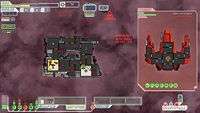 |
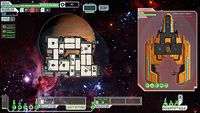 |
 |
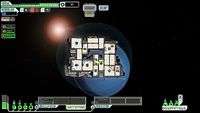 |
 |
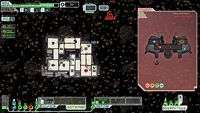 |
The story isn’t meant to be the main attraction, but it serves to give what you’re doing a sense of purpose. I do have to question my motives to an extent; there isn’t anything to say that we’re not the bad guys in this space opera, but looking too much into the story would be missing the point entirely. Instead, the focus is on you and your ship, which you directly deal with when you start a new game. Initially you’ll only have access to one ship, but by completing achievements you can unlock more.
 The Kestrel – your default ship – is a sturdy little vessel that comes equipped with a Burst Laser II and an Artemis Missile Launcher. The ship you use will determine its system layout and its type of crew, and the alternating placement of systems can be a huge difference, as it will govern how quickly your crew can get to certain points, where the airlocks are and where you’ll likely position your crew. These differences continue with the weapons, covering anything from Ion Cannon and Drone Control, to the Halberd Beam and Hull Missile.
The Kestrel – your default ship – is a sturdy little vessel that comes equipped with a Burst Laser II and an Artemis Missile Launcher. The ship you use will determine its system layout and its type of crew, and the alternating placement of systems can be a huge difference, as it will govern how quickly your crew can get to certain points, where the airlocks are and where you’ll likely position your crew. These differences continue with the weapons, covering anything from Ion Cannon and Drone Control, to the Halberd Beam and Hull Missile.
The depth continues with your crew members, which can be anything from humans to space slugs to robots. Each different race (six in total) has different attributes, so the Engi race are better at repairing things, but lack any fighting strength, whereas the Mantis race are much better fighters, yet lack the skill to repair things. The final way to customise your ship is the inclusion of augmentations, as if you weren’t already spoilt for choice. These tend to be quite beneficial if, unlike me, you’re not spending all your scrap (the game’s currency) on just surviving. They include things like long range scanners, improved system armour, Engi medi-bot dispersal and are well worth the extra scrap if you’ve got it lying around.
I knew before starting to play that my ship would be a focal point of my experience within FTL, but I had no idea the depth would be so great. Any person who doesn’t enjoy kitting out their very own spaceship likely doesn’t understand the concept of fun, and while FTL’s customisation may not be deep enough for everyone, I found it to be the perfect blend of allowing me to put my personal touch on things without getting ridiculous or game-breaking.
 With the Kestrel you get a crew made up of three individual humans, which, along with your ship, you can rename. This allows for a more personal touch and, much like when creating a character in any other game, I agonised over what to name everyone. After naming our vessel ‘GamingLives HQ’ I decided that our motley crew would be your humble reviewer (Chris), Editor in Chief of GamingLives, Markuz and fellow writer Zero. I was all set to go, but realised that my ship had no women aboard; being the equal-opportunities gentlemen that I am, I decided that Zero’s character would have to be modified to Zeronica. With everyone’s genders corrected we headed off into the deep unknown.
With the Kestrel you get a crew made up of three individual humans, which, along with your ship, you can rename. This allows for a more personal touch and, much like when creating a character in any other game, I agonised over what to name everyone. After naming our vessel ‘GamingLives HQ’ I decided that our motley crew would be your humble reviewer (Chris), Editor in Chief of GamingLives, Markuz and fellow writer Zero. I was all set to go, but realised that my ship had no women aboard; being the equal-opportunities gentlemen that I am, I decided that Zero’s character would have to be modified to Zeronica. With everyone’s genders corrected we headed off into the deep unknown.
Before you jump into the main game, you may want to give the tutorial a go; it is one of the quickest and easiest to understand that I have come across, and it gives you all of the tools you need to get started, without spoiling any of the many surprises that this game holds. So what happens once you’ve started? Well, any number of things; one of the main selling points for FTL is that the content is randomly generated, so no two playthroughs are exactly alike. I have tried tons of different games (all on normal difficulty), and each time each sector was totally different, and each beacon that you can jump to held a new surprise or a slightly tweaked encounter. This means your first sector could pass by with nothing more than a couple of fights, some mercenary work and raking in a truck load of scrap. In comparison, you could limp into the second sector with nothing more than one crew member, a malfunctioning life-support system and a homicidal robot that you’ve trapped in engineering. It has happened to me, and it may happen to you too.
Regardless of whatever playthrough you have, you will spend plenty of it fighting other ships, which makes up the majority of the gameplay. I guarantee that ninety-nine percent of the time, regardless of your current ship and crew condition, your game will involve you throwing yourself into a fight on the off-chance you grab some loot. I equally guarantee that there will be occasions that you do this, get one scan of the opposition and realise you’ve made a big fucking mistake. The question is whether to go on offensive and try to destroy them, or play a strong defence in order to jump out before you get obliterated. Whatever you do, you’ll be playing close attention to your ship and its systems, which is where the fun really begins.
 Using the Kestrel as an example, you have eight systems to look after, including three subsystems; the latter systems cannot have power diverted away from them, and, provided they are actually functional, will draw no additional power. The same cannot be side for the five main systems, which, depending on their upgrades, will draw certain levels of power from whatever you have in reserves. If the system is damaged or destroyed, you have to remember to restore power to that system after it’s fixed, or it will just sit idle while you get destroyed, safe in the knowledge that you’re doing your bit for global warming by not using any energy.
Using the Kestrel as an example, you have eight systems to look after, including three subsystems; the latter systems cannot have power diverted away from them, and, provided they are actually functional, will draw no additional power. The same cannot be side for the five main systems, which, depending on their upgrades, will draw certain levels of power from whatever you have in reserves. If the system is damaged or destroyed, you have to remember to restore power to that system after it’s fixed, or it will just sit idle while you get destroyed, safe in the knowledge that you’re doing your bit for global warming by not using any energy.
Each system and subsystem has a totally different function, but make no mistake, each are as vital as the next. The shields act as your main defence against laser and beam weapons, as well as asteroids. Missiles and bombs ignore shields and Ion cannons can disrupt them, but they will be one of your most important systems, regardless. These systems power your weapons, although each weapon is powered individually; this gives you the advantage of being able to switch between a number of weapons if you can afford the slots to install them. The only downside of this is that as your weapon systems get damaged, you’ll be able to use fewer weapons; another reason to keep them in working order as much as possible.
Next in the pecking order are the engines, which serve not only to power the FTL drive, but can also add a bonus to your chance to evade enemy fire if a crew member is stationed within engineering. This ‘manning’ bonus also applies to shields and weapons; the former will recharge faster and the latter will power up quicker. The FTL cannot be engaged if the engines are broken, so if a fight starts going all Kobayashi Maru on you, it’s best to ensure those stay functional so you can make good your escape.
 Life Support is the next system that you’ll certainly want to keep in running order if you want your crew to be kept alive. The oxygen levels on the ship will start to drop if damaged, and any areas without oxygen will start to turn a rather unsettling colour of pink. Destruction of this system will mean that the crew will eventually suffocate if it’s not fixed. While it may seem like a great idea to vent the atmosphere from certain rooms containing fires or intruders in an effort to halt both, please do ensure that your life support systems are working first. The crew of GamingLives HQ IV found out about that the hard way.
Life Support is the next system that you’ll certainly want to keep in running order if you want your crew to be kept alive. The oxygen levels on the ship will start to drop if damaged, and any areas without oxygen will start to turn a rather unsettling colour of pink. Destruction of this system will mean that the crew will eventually suffocate if it’s not fixed. While it may seem like a great idea to vent the atmosphere from certain rooms containing fires or intruders in an effort to halt both, please do ensure that your life support systems are working first. The crew of GamingLives HQ IV found out about that the hard way.
The final essential system is the medical bay, albeit minus a holographic doctor with a terrible bedside manner. This serves as an area to heal crew members effected by everything from suffocation, to laser burns, to getting into fights with giant space slugs and robots. If your ship happens to be devoid of oxygen, it also helps to send the crew there while you conjure a solution, as they will heal automatically regardless of air going in and out of their lungs.
While the three subsystems don’t sound that impressive or important: Cockpit, Doors and Sensors, they’re all vital. Without the cockpit in working order, you cannot jump anywhere and you’ll forfeit any chance of evading enemy fire, while functioning door controls can mean the difference between life and death when there is a fire, enemy assailants aboard or a hull breach. Finally, the sensors not only detect what’s going on outside but also inside your ship. Having these go down is not only a massive inconvenience, but you won’t be able to see who or what is happening aboard your craft.
 |
 |
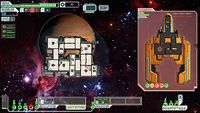 |
 |
 |
 |
There are other systems which come as standard in other vessels, such as Cloaking, Drone Controls and Teleporters. Suffice to say that Cloaking is a huge help, especially when equipped with a very expensive weapon that doesn’t require you to de-cloak to fire it. The Drone Controls are plenty of fun to use and could, in theory, replace your weapons, provided you can find the right ones. These allow you to launch everything from laser drones, to beam drones, to anti-missile and repair drones; they are useful, but it’s an extra system that requires power. Finally teleporters have become the bane of my existence, throwing over all manner of evil bastards to my ship, where they proceeded to manually damage my systems. Not cool when there is an enemy ship shooting at me too.
 Now that you’re familiarised with your ship, are you ready to make the Kessel Run in less than twelve parsecs? Well, not really, because between you and the finish line are all manner of nasty beings, elusive loot and questionable decisions. The opposition you face will be varied, from other humans of various allegiances to creepy aliens looking to strip your ship bare of its crew and valuables. Engagements are tense and quick affairs. A good place to start is by targeting shields and weapons, thereby removing offence and defence in one go, although this doesn’t always go to plan. Sometimes they’ll be so well shielded or sporting such serious fire-power you’ll need to aim everything in one area.
Now that you’re familiarised with your ship, are you ready to make the Kessel Run in less than twelve parsecs? Well, not really, because between you and the finish line are all manner of nasty beings, elusive loot and questionable decisions. The opposition you face will be varied, from other humans of various allegiances to creepy aliens looking to strip your ship bare of its crew and valuables. Engagements are tense and quick affairs. A good place to start is by targeting shields and weapons, thereby removing offence and defence in one go, although this doesn’t always go to plan. Sometimes they’ll be so well shielded or sporting such serious fire-power you’ll need to aim everything in one area.
Regardless of your tactics you’re almost certain to have loads of fun, no matter how many times you die – and with death being permanent, all your hard work would seem for nothing. The truth is that every time I died I learned something new; something that wasn’t in the tutorial – a little nugget of information that tweaked my game plan on the next attempt. Upgrading the door function was one lesson learned early on, as was the importance of having plenty of fuel. Having some scrap in reserve, rather than spending it all, was also something I learned the hard way – namely having to sell all of my weapons just to repair the numerous breaches to my hull.
Despite all these lessons learned over eleven destroyed ships and numerous killed crew members, I have never felt hard done by, and none of my deaths or failures felt unfair. All I was left with was a longing, nay, a desire, to jump straight back in to see what it could throw at me and what I could throw back. For every death I suffered, I had experienced a plethora of near misses, great escapes, heroic stand-offs and memorable engagements. I could regale you with tales of how Chris single-handedly ran the ship by himself for two sectors after Markuz and Zeronica got killed by a group of insane scientists on an abandoned space station. I could tell you about my nervousness when Markuz tried to navigate an asteroid field, despite me telling him the odds of such a feat are approximately three thousand seven hundred and twenty to one. I could inform everyone about the time Zeronica broke a nail trying to repair the FTL drive, but it’s a boring story and ultimately it’s her own fault for not wearing gloves.
 As you experience all this and more, you gain the aforementioned scrap as well as experience for upgrading the ship. I think if they had created two separate values then the game would be far too easy. Having one value brings about some very tough choices very early on; should I upgrade the ship, or buy more weapons and fuel? You’re not guaranteed to find a store as regularly as you may like, so passing up on supplies and repairs for the hull may mean a long jaunt through space without any respite. It’s all well and good having a fully upgraded ship, but totally pointless if you’ve not got the fuel to get it anywhere.
As you experience all this and more, you gain the aforementioned scrap as well as experience for upgrading the ship. I think if they had created two separate values then the game would be far too easy. Having one value brings about some very tough choices very early on; should I upgrade the ship, or buy more weapons and fuel? You’re not guaranteed to find a store as regularly as you may like, so passing up on supplies and repairs for the hull may mean a long jaunt through space without any respite. It’s all well and good having a fully upgraded ship, but totally pointless if you’ve not got the fuel to get it anywhere.
The stores, when you do find them, provide everything from fuel and weapons, to drones and augmentations and, importantly, crew members. This can add some diversity to a crew who may be all from one race or who maybe missing a couple of bodies after the last engagement – don’t get attached to your crew, they will die.
I’ve spoken about FTL and how it works, but how does it look and sound? This game isn’t going to beat Crysis in the graphics department, but it isn’t aiming to. A simple but effective approach has been adopted, resulting in the ships looking awesome, and your HUD bleeping and flashing enough to grab your attention without being annoying. The enemy ships equally look well detailed, while characters models move between rooms quickly, understanding that every second counts. The bird’s-eye view doesn’t hurt the game and is probably the best choice, allowing an overview of everything at any one time (provided your sensors are working). On top of that, the backgrounds change with each jump, with the crescendos of blue and purple nebulas making way for the bleak emptiness of space.
The sound is equally impressive: a mixture of haunting tunes for those quiet moments in deep space, and a quicker, sharper tone taking over whenever someone starts unloading their arsenal in your direction. When things go wrong, the game lets you know; sirens blare and noise erupts from your speakers to remind you to get your shit in gear. As with the graphics, the sound plays second fiddle to the awesome gameplay, but it is still there, and what there is is certainly well done.
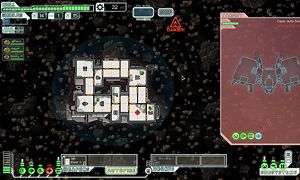 Each engagement will be different from the last, based solely on the random content generator, which ensures some very important differences. It would be impressive if the game ensured that it was always a different ship, with different capabilities but FTL goes one further with just how you come across these adversaries. Will they be phoney distress beacon requesting help, or trying to blow up a civilian ship? Will they beg for mercy once you’ve damaged them enough and try to bribe you with their wares? Will you find two ships in a nebula, striking some nefarious black market deal? Will you engage them? Will you ignore them?
Each engagement will be different from the last, based solely on the random content generator, which ensures some very important differences. It would be impressive if the game ensured that it was always a different ship, with different capabilities but FTL goes one further with just how you come across these adversaries. Will they be phoney distress beacon requesting help, or trying to blow up a civilian ship? Will they beg for mercy once you’ve damaged them enough and try to bribe you with their wares? Will you find two ships in a nebula, striking some nefarious black market deal? Will you engage them? Will you ignore them?
All these decisions are just examples of the totally unpredictable nature of this game. Whenever you finish the jump to any location, you’ll get a box of text appear on-screen, detailing what you’ve found at this new jump beacon. You could find someone who’s out of fuel and in need of help. You could find a civilian ship that needs safe escort. You may find the debris of a ship that you can loot. Solar flares, asteroids fields, sensor disrupting nebulas… they’re all here, and each will effect any location you jump too. I could make this whole review about what I’ve experienced over a mere week of play and I’m still finding new things today, proving that FTL’s strongest suit, by far, is its replayability.
Pros- An incredible premise that has reached its full potential
- Excellent, addictive gameplay
- Endless replayability
- Enjoyable graphics and sound
- Pure, unfiltered, undeniable fun.
- A cheap and affordable price
- No game is perfect, that itself is impossible, but I can't really fault this game for any reason, and any problems I had were quickly forgotten when you consider the pros.
I could sit here and talk about this game for longer than any one person should read a computer screen for. It is the best finished product that I've seen start life a Kickstarter project to date, and if this is the sort of quality that can come out of such a venture, mainstream publishers and developers need to sit up and pay attention.
FTL: Faster Than Light is a fantastic game, and this review only scratches the surface of the possibilities it contains. I haven't mentioned half the weapons, haven't spoken about the majority of the ships, or many of the interactions I've had because, frankly, I've not experienced them myself.
This is a game dripping with style and is easily the most enjoyable science fiction game I've played since Freespace 2, and that's from someone who's played all the Mass Effect games. People bang on and on, about how those games gave you choice, gave you an individual experience and story. They don't; it's scripted with some minor deviations. FTL gives you choice, gives you your own story and tries to kick the stuffing out of you while you experience it. Simply put, if you like having fun, FTL is an essential purchase.
Last five articles by Chris




























Oh man, I wish my PC wasn’t a bunch of cack. This looks like a lot of fun. Great review, yo.
Cheers Rich, appreciate that. You got a laptop? It may cope on that!
I absolutely love the sound of this game and it is on my ‘to play’ list Hilarious but tragic story of the GLHQ vessel!
Hilarious but tragic story of the GLHQ vessel!
@Richie – It doesn’t seem as though it would be very system demanding. With the way the Xbox is going to hell, you should really get a decent PC. There are Steam achievements ya know…
*plays bagpipes* they will be remembered.
Great review matey. I found a mod that switches of the rebel fleet chasing you. Makes the game a lot slower but more enjoyable as an RPG experience I feel.
Steam achievements don’t count! They are like WP7 achievements. That is to say, AIDSy.